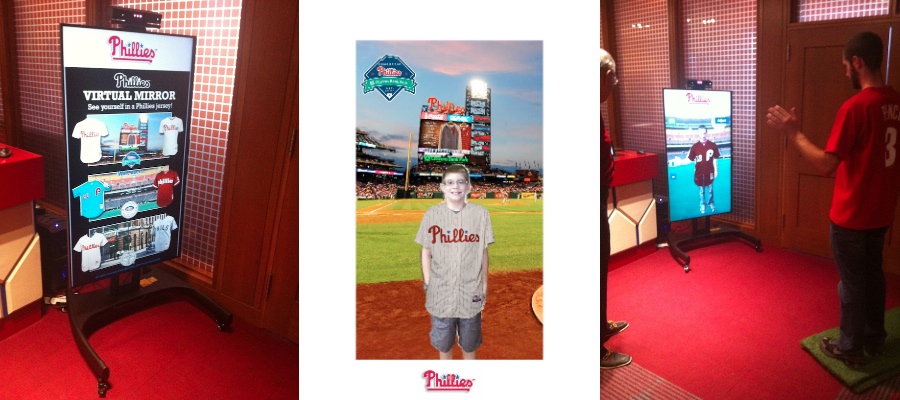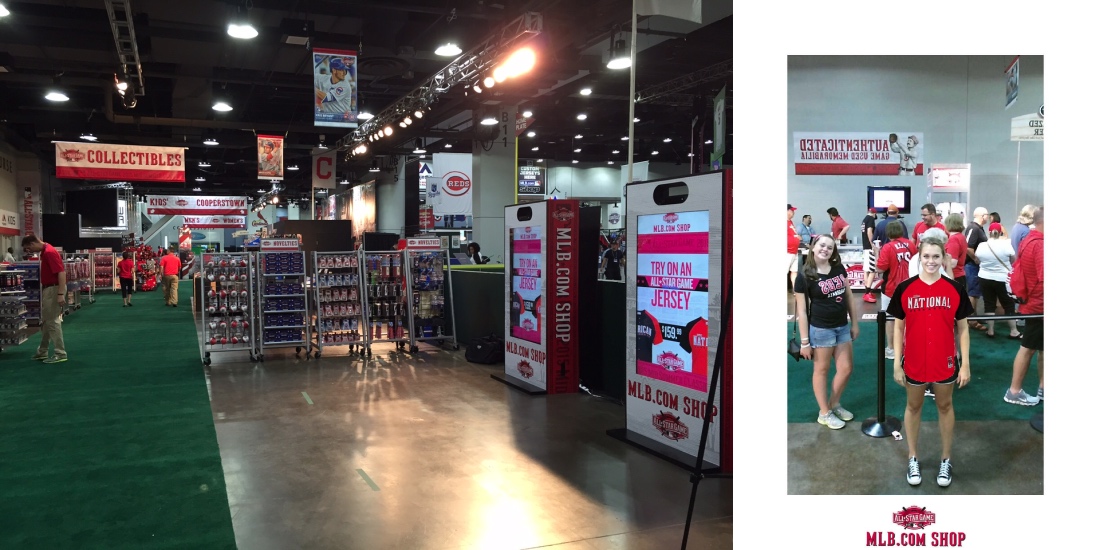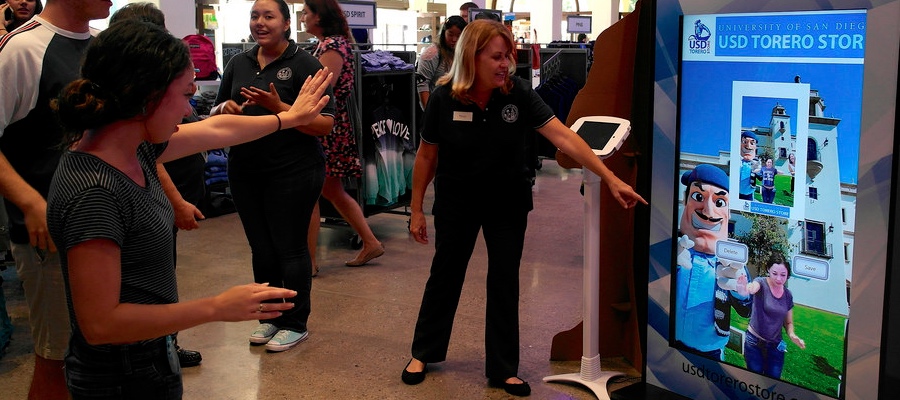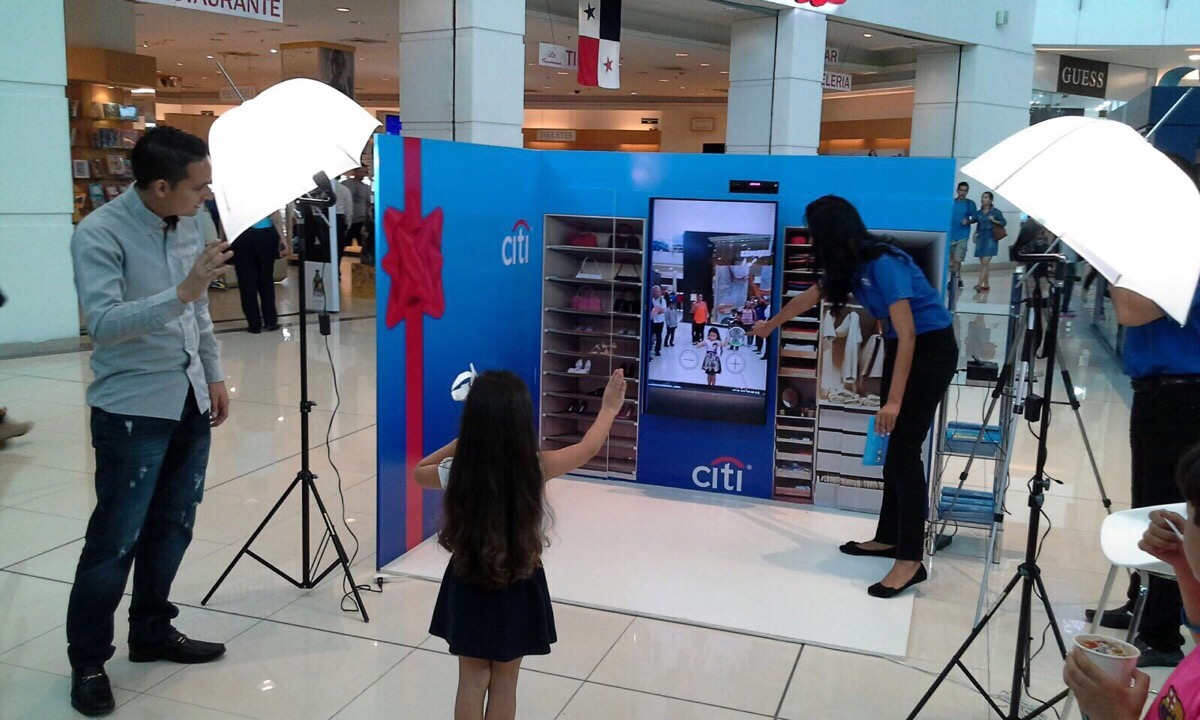Ever since Augmented Reality Virtual Dressing Room Technology debuted on the scene in 2009, there has been both excitement and letdown from the technology. Initial excitement revolved around how retailers could use these solutions to determine a shopper’s fit, show a shopper inventory (virtually) matched to their size, and even have a shopper buy directly from the Virtual Dressing Room kiosk or site. However, that excitement eventually turned to letdown as early Augmented Reality technology wasn’t capable of determining exact size and fit and creating virtual apparel in 3D could get quite expensive. Concept videos accelerated this letdown as they showed special effects driven videos that were nowhere near what Augmented Reality could accomplish at it’s initial stage.
A few years later, though we’re getting closer to better determining virtual fit with second generation technology such as Kinect 2, 3D model creation still remains expensive. And 3D model creation isn’t just expensive for Augmented Reality Virtual Dressing Room technology, it’s generally expensive for most Augmented Reality or Virtual Reality initiatives. Despite these issues, Virtual Dressing Room technology using Augmented Reality can provide many interesting use cases and be deployed in different environments such as retail stores, museums, malls, theme parks, sports stadiums and so on.
We’ve had a few client launches of our Augmented Reality Virtual Dressing Room technology over the last year so we thought it best to provide more details on the different virtual dressing room use cases we deployed and how we targeted shopper engagement to leverage a potential conversion. Engagement was especially high with various use cases specific to our WSS for Kiosks Virtual Dressing Room platform. In 2015, WSS for Kiosks total user sessions increased to 128,000 from 29,000 total user sessions in 2014. This was a 441% increase year over year. As you’ll see below, there’s different ways to provide brand and product engagement through Virtual Dressing Room Technology. (Note: In addition to the use cases below, we also have a new blog post with more virtual dressing room use cases from Delta Airlines, Land’s End, Chick-fil-A, Golfino and others here.)

Kiosk Display, User Image with Virtual Jersey/Background and User Operating Kiosk
PHILADELPHIA PHILLIES – IN STADIUM USE CASE
This specific use case was an initial pilot that debuted in Citizen’s Bank Stadium in Philadelphia in late 2014. Over 50 Jersey’s were shown virtually to stadium visitors with supporting virtual backgrounds. This helped to engage the Phillies fan so they could view not only historic Phillies’ jerseys but also the virtual stadiums for the time period when the jerseys debuted.
Though the kiosk unit targeted engagement of virtual product for the stadium visitor, we also wanted to utilize engagement to drive these same kiosk users to the stadium store at the ballpark to purchase the physical jersey. When a stadium visitor took a photo with the virtual jersey they liked, they were emailed the photo with a 25% coupon attached. The coupon could then be used at the store for a discount on their purchase. More information on Phillies Stadium use case is available here.
ARAMARK & MAJOR LEAGUE BASEBALL – EVENT / DRIVE TO RETAIL USE CASE
In mid-2015, we debuted 2 Virtual Dressing Room kiosk stations displaying virtual MLB All-Star game apparel. Similar to all of our platform deployments, these kiosk stations allowed MLB to capture the name and email of the event visitor and send them their virtual photo.
Unique to this specific use case was how the Virtual Dressing Room kiosk stations were deployed at the event. As you can see from the image above, the kiosk stations were situated at the the front of the MLB store in the event area. As a result, all visitors to the event area were exposed to the virtual inventory at the front of the store and then driven to the physical inventory at the back of the store. This is one of the strengths of virtual dressing room technology – providing consumer engagement with the virtual product to lead to a conversion of the physical product. Though exact fit would be ideal, even approximation of fit with a virtual item will help shoppers more efficiently find the type of apparel style they are looking for. More information on the MLB Virtual Dressing Room Use Case can be found here.
UNIVERSITY OF SAN DIEGO – BOOKSTORE / RETAIL USE CASE
USD recently debuted Virtual Dressing Room technology in their Torero Bookstore. For the launch of the new Torero Bookstore, USD wanted to promote both their apparel inventory via ecommerce and through a Virtual Dressing Room kiosk in-store.
The Virtual Dressing Room kiosk is anchored in the middle of the apparel section in the Torero Bookstore and features many of the new WSS for Kiosks Virtual Dressing Room enhancements including Collection / Item creation and virtual background subtraction to make the user appear in a virtual environment. Most USD apparel items that could be found on their ecommerce site were also categorized and displayed in similar fashion on the Virtual Mirror kiosk. You can view more info on the USD Virtual Mirror here.
CITIBANK – IN MALL / RETAIL USE CASE
Our most recent use case featured WSS for Kiosks deployed in Multiplaza Mall in Panama. This is our second mall deployment with Virtuelle and Nokia debuting a Virtual Dressing Room kiosk in South African malls in 2013.
The Citibank Virtual Dressing Room deployment was promotional though highlights one of the main features of an in-mall execution. Mall retailers can feature various items on the Virtual Dressing Room kiosk to help highlight their product and drive shoppers to their in-mall locations. More information on the Citibank Virtual Dressing Room can be found here.
SUMMARY
From the examples above, you can get an idea of how Virtual Dressing Room technology can be deployed in different environments or channels. Furthermore, based on the type of deployment, there are different engagement tactics that can be used with Virtual Dressing Room technology to help move the shopper through the purchase funnel towards conversion. As Virtual Dressing Room technology matures and 3D modeling costs decrease and become more automated, there will be more instances of how Augmented Reality technology can help retailers drive sales. Past studies have shown that Virtual Dressing Rooms are highest rated use case for retail and recent Virtual Reality studies have shown respondents rate “See items in real form and size when I shop online” as one highest rated VR use case. The future of retail is headed towards an Augmented and Virtual world. For now though, similar to early stages of other technology such as social media, retailers can leverage current features of Virtual Dressing Room technology to target more enhanced engagement with their product or brand.
Note: We have a new blog post with recent virtual dressing room use cases from Chick-fil-A, Delta Airlines, Golfino, Lands’ End, and North Carolina Museum of Art here.
FEB



